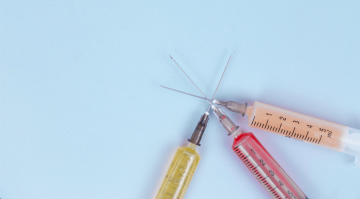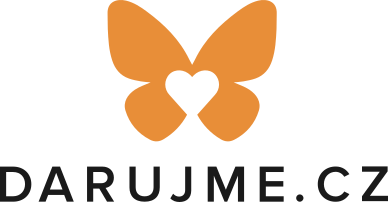Vaccination
Are you unfamiliar with terms like antigen, collective immunity or immune elicitation? Never mind! That’s why we’re here, to explain everything.

What is vaccination, and how does it work?
Vaccination is a process by which a vaccine is administered into the body to artificially activate immunisation – induced immune reaction in which antibodies are produced to protect the person from a given disease. It is the most effective prevention of many infectious diseases.
What has the introduction of vaccination achieved?
We have achieved the eradication of smallpox, for example. For several other vaccine-preventable diseases, we have significantly reduced the incidence of the disease in the population. We still cannot cure some of those diseases, so our only option is to prevent them. Examples of illnesses include rabies and COVID-19.
- More than 20 vaccines are against life-threatening diseases.
- Up to 5 million deaths are prevented by vaccination each year.
- 81 % –Global vaccination coverage in 2021, which is 5% lower than in 2019.👩🎓👩🎓
Glossary
- Antigen = foreign particle that triggers an immune response in the body
- Collective immunity = a state of resistance in a population to infectious diseases. It is acquired actively (after a disease or vaccination) when the organism creates its own antibodies or passively (e.g. transfer of maternal antibodies)
- Immunity waning = gradual weakening of immunity over time as antibody levels against the disease decline
Vaccination in the Czech Republic
The assumed effectiveness of vaccination is achieving a sufficient percentage of collective immunity (percentage of persons not susceptible to infection) – usually, more than 90% vaccination coverage is required. Therefore, some vaccination in the Czech Republic is compulsory by law, following the vaccination calendar – this vaccination is always free of charge.
Compulsory vaccination – legislatively bound
- 1. Regular – according to the vaccination calendar
- 2. Special – vaccination for people at increased risk (occupational vaccination, etc.)
- 3. Emergency – when declared by the chief epidemiologist (in case of floods, epidemics, etc.) – is fully covered by the insurance
Voluntary vaccination
- 4. Recommended – usually covered by insurance (flu, HPV, meningococcal, pneumococcal, COVID-19) or may be covered (rotavirus, varicella, hepatitis A, tick-borne encephalitis)
- 5. On request – paid, for example, travel vaccination or voluntary vaccination of persons without particular risk
What side effects can we expect after vaccination?
Adverse reactions after vaccination are classified according to frequency, from very common to rare. A further division is into local or general side effects.
Common topical side effects
- Pain
- Redness
- Swelling
Common overall side effects
- Fatigue
- Headaches
- Muscle or joint pain
- High temperature
Rare side effects
- Severe allergic reaction
- Anaphylactic shock
- Neurological problems
Everyone vaccinated should temporarily change their lifestyle after vaccination (it is not recommended to exercise, do heavy and physically demanding work, drink large amounts of alcohol, etc.). In this way, the side effects can be partially minimised. All severe and unexpected side effects should be reported to the State Institute for Drug Control. There is no scientific evidence that vaccination causes autism, diabetes mellitus or causes allergies, or asthma.
Why can’t some patients get vaccinated?
This is due to health problems – e.g., severe allergic reaction to a previous vaccination, allergy to a vaccine component, certain serious neurological diseases, and serious immune disorders (autoimmune). Vaccination while pregnant or breastfeeding is not recommended for some vaccines, and the age of the vaccinated individual may also be a limiting factor.
What are the types of vaccines? How do they differ?
There are many different types of vaccines, which differ in the form in which the active component of the vaccine is found.
- Live attenuated vaccines – the active ingredient is a live but attenuated agent, most often a virus. These vaccines are usually administered in small doses and protect the person for a relatively long time. They are more likely to cause a general reaction after vaccination (fatigue, fever, headache or muscle aches). Examples include measles, rubella, mumps, chickenpox, tuberculosis, and yellow fever.
- Inactivated vaccines – in these, the microorganism is killed; tick-borne encephalitis or hepatitis A.
- Anatoxins – the active ingredient is an inactivated toxin; tetanus or diphtheria.
- Subunit or cleaved vaccines – contain cleaved parts of viruses or bacteria (their capsules).
- Recombinant vaccines based on genetic engineering – the genetic information of, for example, yeast or adenoviruses is inserted into the genetic information of the virus or bacteria against which the vaccine is intended to protect. This then leads to the production of antibodies against the disease in question. Examples include vaccination against hepatitis B and some vaccines against COVID-19.
- mRNA vaccines – contain mRNA stored in an envelope, which then enters the cells at the application site, and the cells begin to produce parts that our immune system responds to. An example of these are some COVID-19 vaccines.
- Vector vaccines – the application principle is similar to mRNA vaccines, but the “instructions” for the cells are provided by the virus, which is deprived of the possibility to multiply and is therefore not dangerous for the system – also some COVID-19 vaccines.
Compulsory vaccinations
Infanrix Hexa vaccine
A combination vaccine against 6 diseases is given in 3 doses at week 9, month 4 and between 11–13 months. A portion of the Infanrix Hexa is re-vaccinated – between the 5th–6th year and the 10th–11th year with the DiTePe combination, i.e. diphtheria, tetanus and whooping cough. Between 10–11 years, a polio vaccine booster is applied.
1. Tetanus
It is an acute disease caused by toxins produced by the bacterium Clostridium tetani. In recent years, sporadic cases have been reported in the Czech Republic, up to 3 yearly. Tetanus is manifested by painful muscle spasms, especially of the masseter and neck muscles. Despite intensive treatment, the infected person is at risk of heart failure and suffocation. Spores of the bacterium are common in the environment, especially in soil contaminated with animal and human faeces, where they survive for long periods. Infection can occur when the spores are injured and introduced into a wound. In addition to the basic Infanrix Hexa regimen with re-vaccination, additional boosters should be administered every 10–15 years.
2. Diphtheria
The toxin-producing bacterium Corynebacterium diphtheriae causes diphtheria. It most often manifests as severe tonsillitis, narrowing the larynx and pharynx. The toxins can damage the heart, kidneys and nerves. It is transmitted by airborne droplets or contact with contaminated objects.
3. Whooping cough
Whooping cough syndrome is caused mainly by Bordetella pertussis and Bordetella parapertussis. It manifests by bouts of intense dry coughing that can lead to vomiting or choking. Since the 90s, as in other countries, there has been an increased incidence of the disease in all age groups. It is transmitted through the airborne route via droplets produced when a sick individual speaks, coughs, sneezes, or, rarely, by contact with contaminated objects. The National Immunization Committee (NICC) recommends a booster dose of the pertussis vaccine at least once in adulthood as part of a combination of diphtheria, tetanus and pertussis vaccines for all residents under the age of 65.
4. Hepatitis B
Viral hepatitis – inflammation of the liver, in layman’s terms, jaundice – is dangerous because of its possible transition to the chronic stage, which leads to cirrhosis and liver cancer, most often in the case of children. The incidence of the disease has been slowly declining in the country, and widespread vaccination of health workers and risk groups has been necessary, with the annual incidence now around 100 cases. In addition to the Infanrix Hexa component, vaccination is recommended for travellers, patients with liver disease or other risk factors. It is also used by health workers, workers in low-threshold programmes for drug users, outreach workers, the prison service, etc.
5. Polio (poliomyelitis)
Poliomyelitis, or polio, is a highly contagious disease. It has been eradicated in this country since 1960, but the introduction of diseases from abroad cannot be ruled out. It has a varied clinical picture – it can cause lifelong paralysis and even death, with paralysis of the respiratory and swallowing muscles being a life-threatening complication. A long-term complication is the so-called post-poliomyelitis syndrome, where 20–40 years after infection, health may deteriorate with excessive fatigue, muscle weakness, paresis, and difficulty swallowing or breathing. The virus is present mainly in the infected individual’s stool, so transmission occurs primarily through hands contaminated with stool (so-called faecal-oral transmission) or nasopharyngeal secretions. Vaccination is recommended for travellers to countries where poliovirus is still present.
6. Diseases caused by Haemophilus influenzae type B
Haemophilus influenzae, type B, causes many serious illnesses, such as epiglottitis (inflammation of the laryngeal ducts), especially in young children, with a dramatic course where there is a risk of suffocation. Cerebellitis, pneumonia, arthritis, bone marrow inflammation and sepsis are also severe. Airborne droplets transmit it. Vaccination is covered by health insurance for high-risk groups, mainly people with spleen loss, bone marrow transplants, severe immunodeficiencies or severe infections.
MMR tri-vaccine
The combined live vaccine (M-M-RVAXPRO, Priorix) against measles, rubella and mumps is given in 2 doses – the first between 13–18 months and the second at 5–6 years of age.
1. Measles
The measles virus, or morbillivirus, causes a febrile condition with a rash all over the body lasting more than 3 days, preceded by high fever, runny nose, Koplik’s spots and conjunctivitis. The disease is hazardous because of its complications – pneumonia, meningitis or brain inflammation. It is highly contagious, spreading through the air via droplets or direct contact with contaminated objects.
Recommended vaccination
Vaccination is also possible in adulthood – given the epidemiological situation in the world, the possibility of introducing sporadic diseases from abroad or contact diseases cannot be excluded. It is especially recommended for travellers if they are going to areas where the disease is present. It is also crucial for health professionals working in infectious disease or dermatology departments.
2. Rubella
Rubella virus, or rubivirus, causes mild illness, with fever and flu-like symptoms, enlarged lymph nodes, rash or joint pain. It is rarely complicated by brain disease. Pregnant women are a high-risk group, as infection can cause severe foetal damage with lifelong consequences and spontaneous abortion. The degree of damage depends on the immunity of the mother and the progress of the pregnancy. The disease is highly contagious, spreading by airborne droplets or direct contact with contaminated objects.
3. Mumps
The mumps virus, or paramyxovirus, causes painful inflammation of the salivary glands. It can be complicated by inflammation of the meninges, the brain, damage to the pancreas and, in adolescents and young men, often inflammation of the testicle or epididymis, leading to infertility. Long-term sequelae include neurological deficits or unilateral deafness. Mumps is highly contagious, spreading through the air via droplets or direct contact with contaminated objects.
Optional vaccination
Tick-borne encephalitis
Tick-borne encephalitis is an infectious viral disease affecting the nervous system. It manifests in phases, with the first phase after attachment developing flu-like symptoms such as headache, nausea, fever or muscle and joint pain. In the second phase, signs of damage to the nervous system are added – headache, lightheadedness, disorientation, memory impairment, stiff neck, and dizziness. People over 60 often experience a severe course. There can be long-term effects such as headaches, hearing loss or polio.
How is it transmitted?
Infection is transmitted to humans from animals, mainly by infected ticks. Still, less common transmission is through the consumption of raw milk and unpasteurised dairy products from infected animals (goats, cows, sheep) or through injury when pulling an infectious tick from a domestic animal. The tick transmits the tick-borne encephalitis virus as early as 2 hours after attachment. Therefore, removing the tick immediately after returning from a long walk may still be too late.
How is it treated?
There is no specific cure for tick-borne encephalitis. Neither antivirals nor post-exposure vaccination are effective in preventing tick-borne encephalitis.
Vaccinations
There are 2 non/living vaccines – Encepur and FSME Immun – with 3 doses. After the first dose, the protective antibody level is not yet sufficient. The second dose is administered 1–3 months after the first dose, and the third dose is administered 5–12 months after the second dose. The first re-vaccination is given 3 years after the third dose, and a further vaccination is given after 3–5 years. However, there is also a slightly accelerated schedule for the summer months. And beware, vaccines are now covered by health insurance for people over 50.
Influenza
Influenza is a highly contagious viral disease that occurs mainly between January and March in the Czech Republic. Influenza viruses (influenza) A, B, and C are spread among humans. In the elderly, debilitated or chronically ill persons, who are most at risk, it can cause pneumonia, heart muscle or nerve tissue involvement and otitis media in children. It is most commonly transmitted by airborne droplets from infected persons’ breath, cough or sneeze, and by contaminated hands touching the face.
Vaccinations
Influenza vaccination coverage is still low in the Czech Republic (5–7%). It is most strongly recommended for the elderly and those with chronic illness. Vaccination is also important for younger people or children, especially if risk factors are present or the person simply does not want to get the potentially dangerous flu. All health professionals should be vaccinated. The best time to vaccinate is before the start of the influenza epidemic – from the end of September onwards, during October and November. Vaccination against influenza every year provides solid protection against the disease, especially against a severe course. The vaccines contain small parts of the dead virus, do not cause infection and cannot infect the person with influenza. Severe influenza after vaccination is only possible if the person was vaccinated late and was already in the incubation period when the vaccine was administered or became infected just after vaccination.
Pneumococcus
Pneumococcus pneumoniae or Streptococcus pneumoniae is a bacterium that causes serious illnesses such as pneumonia, purulent meningitis or sepsis. In children, it is the most common cause of bacterial otitis media. Infections are most serious in children under 2 years of age and those over 65. The droplet route transmits it – coughing and sneezing.
How is it treated?
Pneumococcus is treated with antibiotics, and the problem is the increasing resistance of pneumococci to commonly used antibiotics worldwide. In the elderly and chronically ill patients, pneumococcal infections are usually treated in hospitals.
Vaccinations
Adults are vaccinated with one dose of Prevnar 13, injected intramuscularly with a thin needle into the arm’s deltoid muscle. Vaccination with Prevnar 13 helps protect against the 13 types of pneumococcus whose components are contained in the vaccine, and these types cause the vast majority of severe pneumococcal disease. For seniors over 65 and selected risk groups, vaccination against pneumococcal infections is fully covered by health insurance.
Meningococcus
Meningococcal infections are serious diseases causing various forms of meningitis. They begin suddenly with high fever, severe headache and joint pain. These symptoms may be followed by sudden onset of drowsiness, confusion, stiff neck, blurred consciousness and typical bleeding into the skin followed by tissue death. Complications of meningococcal disease may include hearing loss, blindness, epilepsy and permanent brain damage. In addition to children and young people, vaccination against meningococcal disease is also essential for people travelling to areas with a higher incidence of meningococcal infections.
How is it transmitted?
The bacteria are transmitted by droplet infection, that is, through the air when talking, coughing or sneezing, or through objects stained with respiratory secretions.
Vaccinations
There are 13 serotypes of Neisseria meningitidis, and effective vaccines have been developed against the 5 most prevalent. Vaccines are either quadrivalent, i.e. targeting serogroups A, C, Y, W-135 (Menveo and Nimenrix vaccines available in our country) or monovalent, targeting serogroup B (Bexsero and Trumenba vaccines).
Hepatitis A
Infectious jaundice or viral hepatitis is a viral infection of the liver. Hepatitis is a disease that manifests itself in the first stage with flu-like symptoms such as temperature, nausea, headache, abdominal pain and general weakness. Joint, skin and nervous manifestations may occur. In the next stage of the disease, the trouble worsens with dark urine, light stools, and sometimes itchy skin. The disease mainly affects children and young people.
How is it transmitted?
The source of infection is people during the incubation period and at the beginning of the disease. The disease is spread mainly by the faecal-oral route, by dirty hands contaminated with water, vegetables and food. Travellers consuming cold food, street food or drinking unpackaged water are particularly at risk.
Vaccinations
Vaccination with either two doses of monovalent vaccines (Avaxim, Havrix Vaqta) 6–12 months apart. Or three doses of a combined hepatitis A and B vaccine (Twinrix), with the second dose given 1–3 months apart and the third dose given 6–12 months apart. Re-vaccination is only recommended if the risk is increased.
Shingles
Shingles or Herpes zoster is a painful infectious viral disease caused by the same causative agent as chickenpox (Varicella-zoster virus). It primarily affects people over 50 and immunosuppressed patients, more often women.
How is it transmitted?
After chickenpox, the virus remains "dormant" in the body, which can reactivate after some time and develop shingles. It arises due to weakened immunity due to external (stress, sun, physical exertion) or internal factors (treatment weakening the immune system, illness). In shingles, the virus is transmitted only by direct contact with the blisters, not by air or other non-contact routes. The infectiousness of shingles to susceptible persons is much lower than with chickenpox.
Vaccinations
Unfortunately, the shingles vaccine is not currently available in the Czech Republic. Otherwise, it is recommended for people who have not had chickenpox in the past or are unsure about it to gain immunity against chickenpox and shingles simultaneously.

